DS Automobiles DS 3 vs Mazda CX-30 – Różnice i ceny w porównaniu
Oba modele mają swoje mocne strony – ale który lepiej pasuje do Ciebie?
Porównaj bezpośrednio osiągi, zużycie, cenę i przestrzeń: DS Automobiles DS 3 czy Mazda CX-30?
The DS Automobiles DS 3 and the Mazda CX-30 represent two distinct approaches to the compact SUV market, blending innovative technology with unique design elements. Both vehicles are admired for their performance and features, but they cater to different types of consumers. This comparison examines their technical specifications, innovations, and overall functionalities to help potential buyers make an informed choice.
Design and Dimensions
The DS 3 retains a modern and stylish appearance characteristic of its brand, measuring 4118 mm in length, 1791 mm in width, and 1534 mm in height. It offers a sporty presence that is further enhanced by elegant curves and premium materials in the cabin. In contrast, the Mazda CX-30 is slightly larger at 4395 mm long, 1795 mm wide, and 1540 mm high. The CX-30's design features a more rugged look, appealing to adventurous drivers, while still maintaining a touch of sophistication.
Performance and Powertrains
The DS 3 offers a range of engine options, including diesel, petrol MHEV, and electric variants. Its power outputs are impressive, ranging from 130 to 156 HP, with CO2 emissions as low as 0 g/km for the electric model, making it environmentally friendly. The diesel and petrol options deliver strong performance, achieving 0-100 km/h in as little as 9.1 seconds.
On the other hand, the Mazda CX-30 is powered by petrol MHEV engines, generating up to 186 HP. It showcases a range of torque figures from 238 to 240 Nm and accelerates from 0-100 km/h in as little as 8.3 seconds. The differences in power and acceleration may appeal differently to drivers, with those seeking a sportier ride leaning towards the CX-30.
Fuel Efficiency and Range
In terms of fuel efficiency, the DS 3 shines with diesel consumption figures as low as 5 L/100 km and the electric variant boasting an electric range of 400 km with a 51 kWh battery capacity. This makes it a practical option for daily commutes and long-distance travel alike.
The Mazda CX-30, while slightly less efficient, offers a variety of fuel figures ranging from 5.7 to 6.6 L/100 km, depending on the chosen engine configuration. With a fuel tank capacity of 51 liters, it also provides decent range for longer journeys, though not as environmentally conscious as the electrified options from DS.
Interior and Technology
Inside the DS 3, premium materials and attention to detail create a luxurious experience. The cabin can comfort up to 5 occupants, and features cutting-edge technology options that enhance the driving experience. DS Automobiles focuses heavily on digital interfaces, offering an intuitive infotainment system that integrates seamlessly with smartphones.
Meanwhile, the Mazda CX-30 showcases a functional yet modern dashboard, also accommodating 5 passengers. The infotainment system, while user-friendly, has received some criticism for requiring a learning curve to master. However, its heads-up display and driver-centric layout provide a solid experience, catering to tech-savvy consumers.
Safety and Driver Assistance
Both models are packed with safety innovations. The DS 3 features advanced driver assistance systems that include adaptive cruise control, lane keeping assist, and a robust suite of airbags. In addition, its high CO2 efficiency ratings highlight its commitment to sustainability and eco-friendliness.
The Mazda CX-30 scores well in safety too, equipped with i-Activsense technologies that offer features like smart brake support and a rear cross-traffic alert. This not only enhances driver confidence but also takes into account modern driving challenges.
Conclusion
The choice between the DS Automobiles DS 3 and the Mazda CX-30 ultimately comes down to personal preference. The DS 3 is ideal for those seeking a cutting-edge, eco-friendly compact SUV with luxurious touches, while the Mazda CX-30 caters more to those who value sporty performance and style with robust technological features.
Both vehicles showcase the ongoing innovations within the automotive industry, each offering unique advantages that will no doubt satisfy a wide range of drivers. Whether your focus lies on fuel efficiency, performance, or advanced features, both models are contenders in the increasingly competitive SUV landscape.
Szczegóły techniczne: konkretne różnice między modelami
Koszty i zużycie: W kwestii ekonomii oba modele pokazują ciekawe różnice.
Mazda CX-30 ma trochę przewagę cenową – jego cena zaczyna się od 129300 zł, podczas gdy DS Automobiles DS 3 kosztuje 145800 zł. Różnica wynosi około 16473 zł.
Różnice widać również w spalaniu: DS Automobiles DS 3 zużywa 5 L i jest trochę oszczędniejszy niż Mazda CX-30, który spala 5.70 L. To około 0.70 L różnicy na 100 km.
Silnik i osiągi: Pod maską widać, który model jest bardziej sportowy i kto ma lepszy start.
Pod względem mocy silnika Mazda CX-30 ma trochę przewagę – 186 KM zamiast 156 KM. To różnica około 30 KM KM.
W przyspieszeniu 0–100 km/h Mazda CX-30 jest prawie niezauważalny szybszy – 8.30 s wobec 9.10 s. Różnica wynosi około 0.80 s sekundy.
Pod względem prędkości maksymalnej Mazda CX-30 jest minimalny lepszy – osiąga 204 km/h, podczas gdy DS Automobiles DS 3 kończy na 196 km/h. Różnica to około 8 km/h.
Różnica widoczna jest również w momencie obrotowym: DS Automobiles DS 3 ciągnie minimalny mocniej – 260 Nm wobec 240 Nm. Różnica to około 20 Nm.
Przestrzeń i praktyczność: Poza mocą liczy się też wygoda i funkcjonalność. Tu decyduje się, który samochód jest bardziej praktyczny i wszechstronny.
Oba samochody oferują miejsce dla 5 osób.
Pod względem masy własnej DS Automobiles DS 3 jest nieco lżejszy – 1249 kg wobec 1455 kg. Różnica to około 206 kg kg.
Pod względem pojemności bagażnika Mazda CX-30 oferuje lekko więcej miejsca – 430 L wobec 350 L. To różnica około 80 L litrów.
Pod względem maksymalnej pojemności ładunkowej Mazda CX-30 wypada wyraźny lepiej – do 1406 L, czyli o około 356 L więcej niż DS Automobiles DS 3.
Pod względem ładowności Mazda CX-30 wypada minimalny lepiej – 496 kg wobec 466 kg. Różnica to około 30 kg kg.
Podsumowując, Mazda CX-30 jest przewyższa w niemal każdym aspekcie i zasługuje na tytuł DriveDuel Champion.
Oferuje lepszy, bardziej zrównoważony pakiet i jest praktyczniejszym towarzyszem na co dzień.
DS Automobiles DS 3
DS 3 to stylowy i elegancki hatchback, który przyciąga uwagę swoim unikalnym designem oraz luksusowym wykończeniem. Wnętrze pojazdu zachwyca nowoczesnymi technologiami oraz wysokiej jakości materiałami, co zapewnia podróżującym komfort na najwyższym poziomie. Dzięki dynamicznym osiągom oraz świetnym właściwościom jezdnym, DS 3 jest idealnym wyborem dla osób ceniących sobie zarówno styl, jak i przyjemność z jazdy.
szczegóły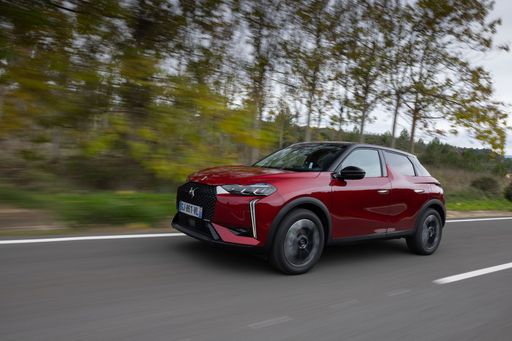 @ media.stellantis.com
@ media.stellantis.com
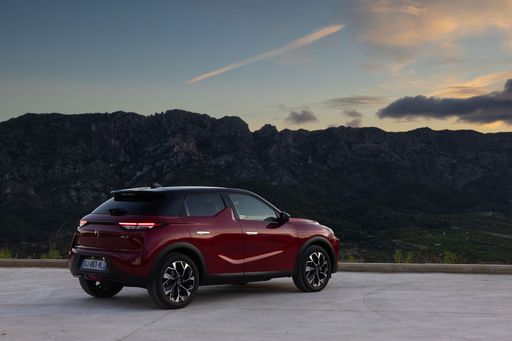 @ media.stellantis.com
@ media.stellantis.com
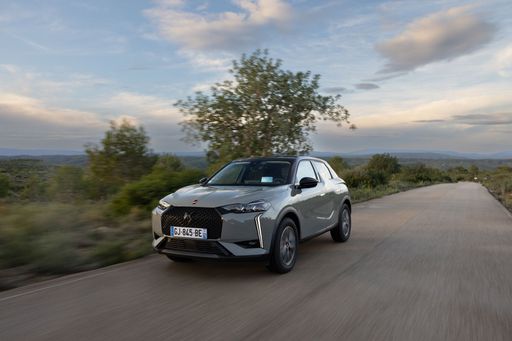 @ media.stellantis.com
@ media.stellantis.com
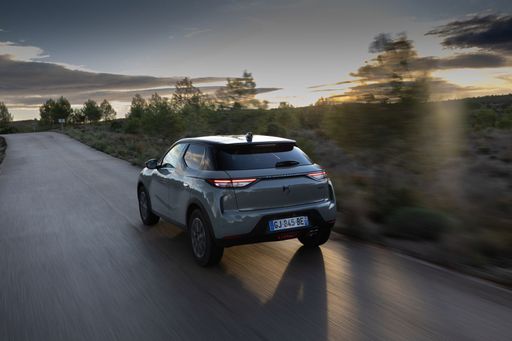 @ media.stellantis.com
@ media.stellantis.com
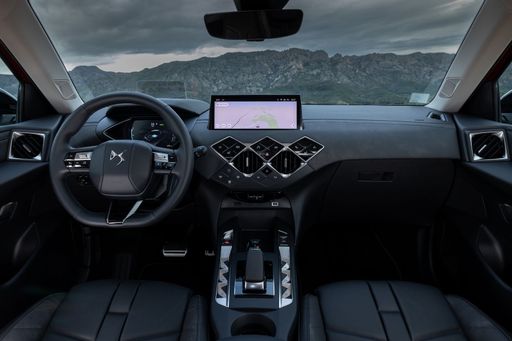 @ media.stellantis.com
@ media.stellantis.com
Mazda CX-30
Mazda CX-30 to kompaktowy SUV, który łączy w sobie nowoczesny design z funkcjonalnością. Jego dynamiczna sylwetka przyciąga uwagę, a wnętrze oferuje wysokiej jakości materiały oraz zaawansowane technologie, które zapewniają komfort podróżowania. CX-30 doskonale sprawdza się zarówno w miejskiej dżungli, jak i na dłuższych trasach, oferując wyjątkowe wrażenia z jazdy.
szczegóły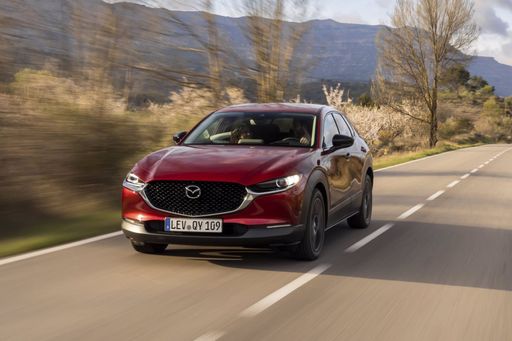 @ de.mazda-press.com
@ de.mazda-press.com
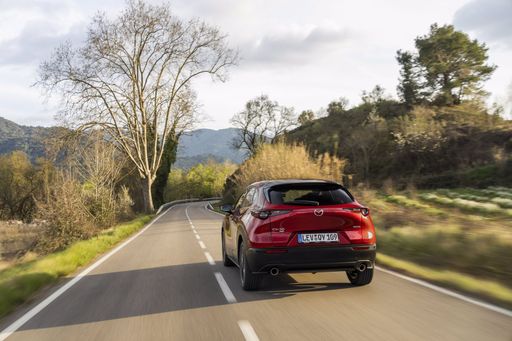 @ de.mazda-press.com
@ de.mazda-press.com
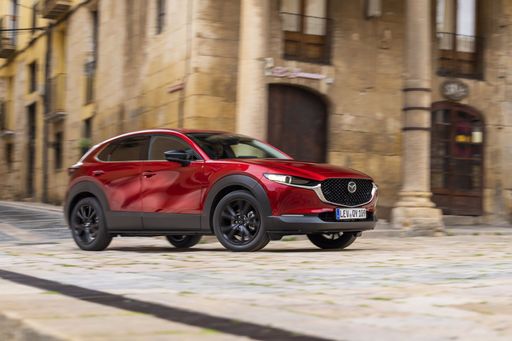 @ de.mazda-press.com
@ de.mazda-press.com
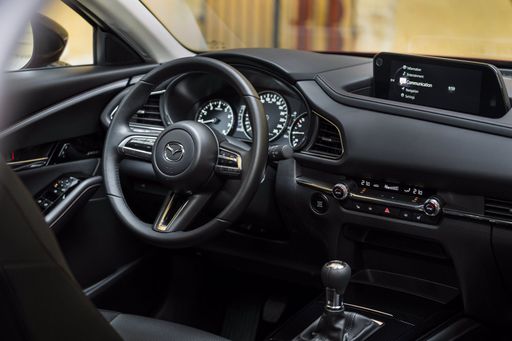 @ de.mazda-press.com
@ de.mazda-press.com

|

|
|
|
|
Koszty i Zużycie |
|
|---|---|
|
Cena
145800 - 207800 zł
|
Cena
129300 - 188400 zł
|
|
Zużycie L/100km
5 L
|
Zużycie L/100km
5.7 - 6.6 L
|
|
Zużycie kWh/100km
15.50 kWh
|
Zużycie kWh/100km
-
|
|
Zasięg elektryczny
400 km
|
Zasięg elektryczny
-
|
|
Pojemność baterii
51 kWh
|
Pojemność baterii
-
|
|
CO2
0 - 112 g/km
|
CO2
129 - 148 g/km
|
|
Pojemność zbiornika paliwa
44 L
|
Pojemność zbiornika paliwa
48 - 51 L
|
Wymiary i Nadwozie |
|
|---|---|
|
Typ nadwozia
SUV
|
Typ nadwozia
SUV
|
|
Miejsca siedzące
5
|
Miejsca siedzące
5
|
|
Drzwi
5
|
Drzwi
5
|
|
Masa własna
1249 - 1646 kg
|
Masa własna
1455 - 1587 kg
|
|
Pojemność bagażnika
350 L
|
Pojemność bagażnika
422 - 430 L
|
|
Długość
4118 mm
|
Długość
4395 mm
|
|
Szerokość
1791 mm
|
Szerokość
1795 mm
|
|
Wysokość
1534 mm
|
Wysokość
1540 mm
|
|
Maksymalna pojemność bagażnika
1050 L
|
Maksymalna pojemność bagażnika
1398 - 1406 L
|
|
Ładowność
362 - 466 kg
|
Ładowność
458 - 496 kg
|
Silnik i Wydajność |
|
|---|---|
|
Typ silnika
Elektryczny, Mild Hybrid Benzyna
|
Typ silnika
Mild Hybrid Benzyna
|
|
Skrzynia biegów
Automatyczna
|
Skrzynia biegów
Manuel, Automatyczna
|
|
Szczegóły skrzyni biegów
Reduktor, Automatyczna dwusprzęgłowa
|
Szczegóły skrzyni biegów
Manualna skrzynia biegów, Automatyczna skrzynia biegów
|
|
Rodzaj napędu
Napęd na przednie koła
|
Rodzaj napędu
Napęd na przednie koła, Napęd na cztery koła
|
|
Moc KM
145 - 156 KM
|
Moc KM
140 - 186 KM
|
|
Przyspieszenie 0-100km/h
9.1 - 9.2 s
|
Przyspieszenie 0-100km/h
8.3 - 10.3 s
|
|
Maksymalna prędkość
150 - 196 km/h
|
Maksymalna prędkość
191 - 204 km/h
|
|
Moment obrotowy
230 - 260 Nm
|
Moment obrotowy
238 - 240 Nm
|
|
Liczba cylindrów
3
|
Liczba cylindrów
4
|
|
Moc kW
107 - 115 kW
|
Moc kW
103 - 137 kW
|
|
Pojemność silnika
1199 cm3
|
Pojemność silnika
1998 - 2488 cm3
|
Ogólne |
|
|---|---|
|
Rok modelowy
2024 - 2025
|
Rok modelowy
2025
|
|
Klasa efektywności CO2
A, C
|
Klasa efektywności CO2
D, E
|
|
Marka
DS Automobiles
|
Marka
Mazda
|
Jakie rodzaje napędu ma DS Automobiles DS 3?
Model oferowany jest z napędem Napęd na przednie koła.
Wyświetlane ceny i dane są szacunkowe, oparte na niemieckich cenach katalogowych i mogą się różnić w zależności od kraju. Te informacje nie stanowią wiążącej oferty.
